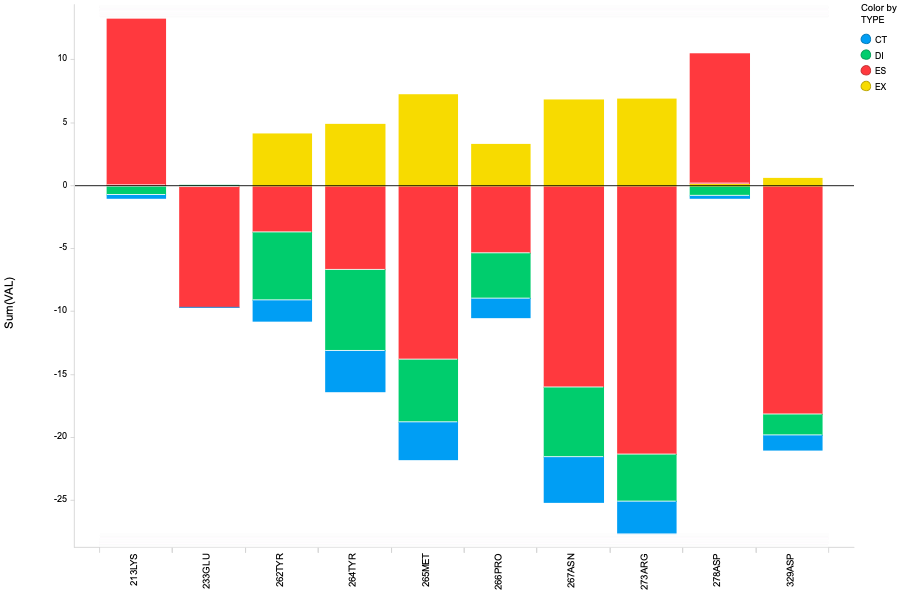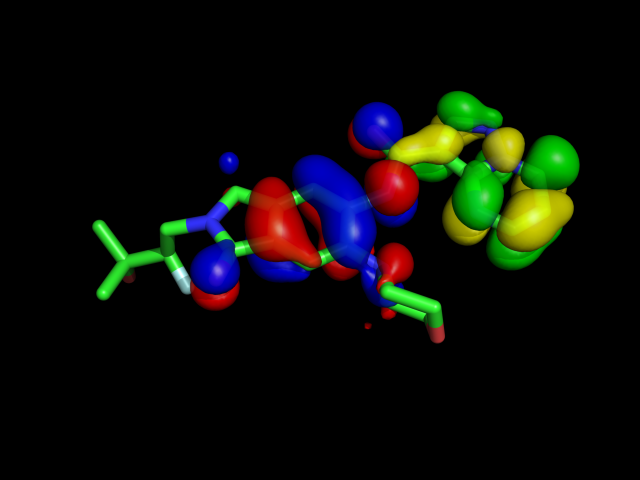28 12 2019 chemoinformatics Tweet
This is the 24th article of the Drug Discovery Advent Calendar (Dry) 2019.
I was very impressed by the weak hydrogen bonds in the article, A C-H···O Interaction Against IRAK4 / Drug Hunter . So I checked that interaction with Fragment Orbital Method
PDB:6UYA was used as a complex structure and details of calculation are here
- Method: FMO inplemeneted in GAMESS
- Basisests: MP2/6-31G
- PIEDA terms: Electrostatic(ES), Exchange repulsion(EX), Dispersion interaction(DI), Charge Transfer(CT)
If you are not familiar with FMO, this book will help you.
 Fragment Molecular Obital Method : Practical Applications To Large Molecular Systems [Hardcover] [Jan 01, 2009] Fedorov
Fragment Molecular Obital Method : Practical Applications To Large Molecular Systems [Hardcover] [Jan 01, 2009] FedorovNA
/ 6055円 ( 2018 )
This is actually the article for the 24th advent calendar, but I can't give you this book because I'm not Santa Claus. If you click on the link instead, I'm sure that Amazon will deliver this book to you instead of Santa Claus.
What a wonderful Christmas gift it is! Now, click it!
The result is here. I only show the interaction which have strong stable/unstable interactions for clarify.
The result shows that there is a C-H···O Interaction between compound and protein(TYR264 in this case), but the interaction energy is rather weaker than the typical hydrogen bond.
*** The amino acid number and fragment number doesn't exactly match in FMO. The carboxylic acid moves to the next residue because of cleaverage in protein at C (sp3) -C (sp3) bond.
And also I'm not sure that the nature of this interaction is same as hydrogen bond. I guess it also includes side chain effects because DI term is slightly large. To clarify this, we can replace TYR with Gly and execute FMO calculation again.

Next, we will interpret it by frontier orbital, but it's WIP.
- HOMO: red and blue, LUMO: green and yellow

I guess we'll know a lot if I do it so far, but I've run out.
Have a happy new year!
